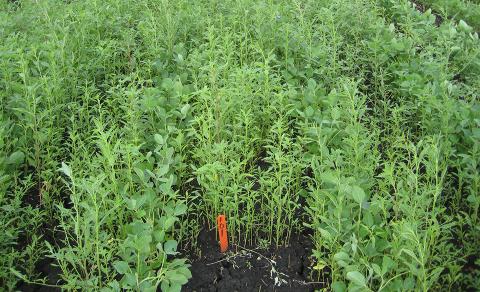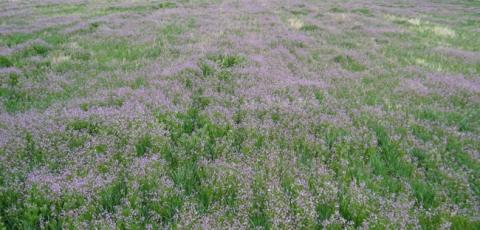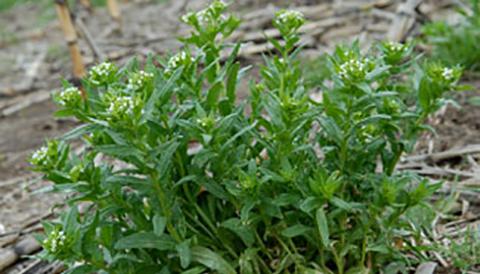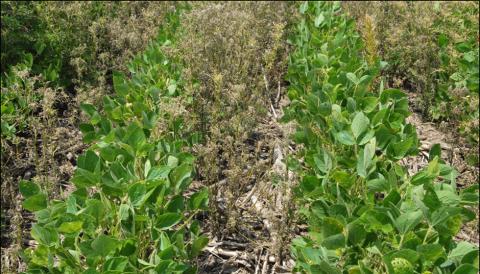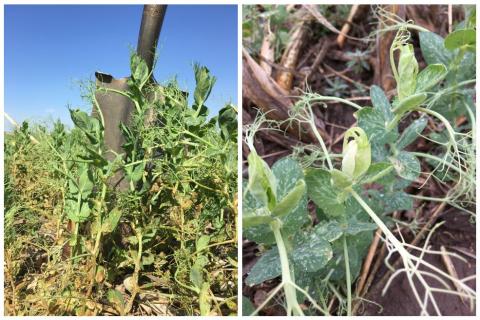University Research: Ragweed Can Pose a Serious Threat to Soybean Yield
March 30, 2018
Once thought to be an innocent bystander to field crop production, common ragweed can "drastically reduce soybean yields," according to University of Nebraska-Lincoln research. In dense populations, the loss was shown to be 40-76%.
Pre-emergence Residual Herbicides are the Foundation of Soybean Weed Control
March 29, 2018
Even with new dicamba-resistant soybeans, pre-emergence, residual herbicides are needed to mitigate yield loss due to weed competition, provide a longer time for soybean to establish, and reduce selection pressure for weeds resistant to post-emergence herbicides.
Sulphur Cinquefoil — An Invasive Species in Nebraska
March 16, 2018
Sulphur cinquefoil is a perennial forb and aggressive invasive species that establishes quickly in disturbed areas and over-grazed sites. Prevention and, if necessary, timely identification and management are the best routes to containing this invader.
Controlling Weeds in and Fertilizing Winter Wheat, Particularly Late-Seeded Fields
March 15, 2018
With many wheat fields planted later than normal due to rain, stands are not as competitive with weeds and younger plants may be susceptible to herbicide injury, making a good weed management plan even more important this year.
Dormant Spraying for Alfalfa Weeds
March 2, 2018
With temperatures beginning to warm up, now is a good time to manage weeds such as field pennycress, downy brome, mustards, cheatgrass, and shepherd's purse in dormant alfalfa without risking plant injury.
Herbicide Options for Managing Glyphosate-resistant Common Ragweed in LibertyLink Soybean
March 1, 2018
Results from a 2017 weed management trial on glyphosate-resistant ragweed indicated two applications were often more efficient and cost effective than either three applications or one application of herbicide.
In the News
March 1, 2018
Nebraska Extension specialists in the ag media discussing challenges of early season weed control, the good and the bad of cover crop insects, irrigated wheat production, and improving use efficiency of applied organic nitrogen.
Field Peas—A Guide to Herbicide Carryover And Herbicide Efficacy
February 22, 2018
How to avoid herbicide carryover injury when designing an effective herbicide program for crop rotations integrating field peas.

